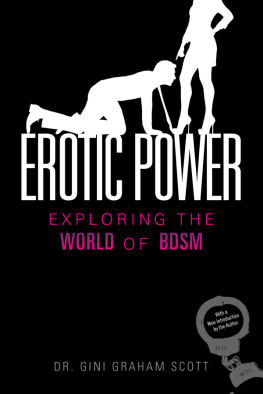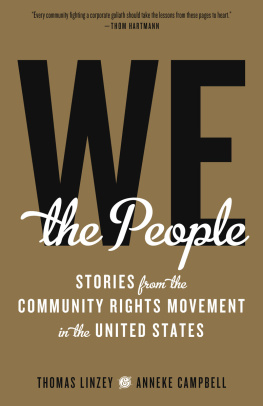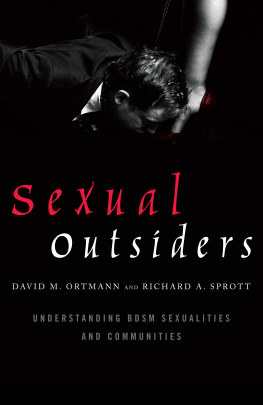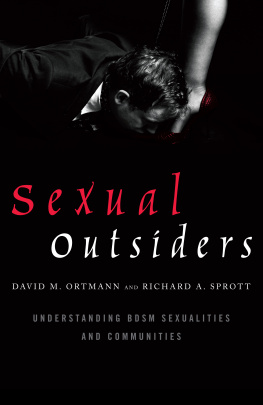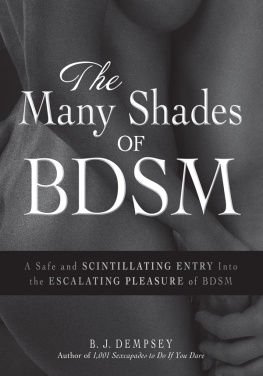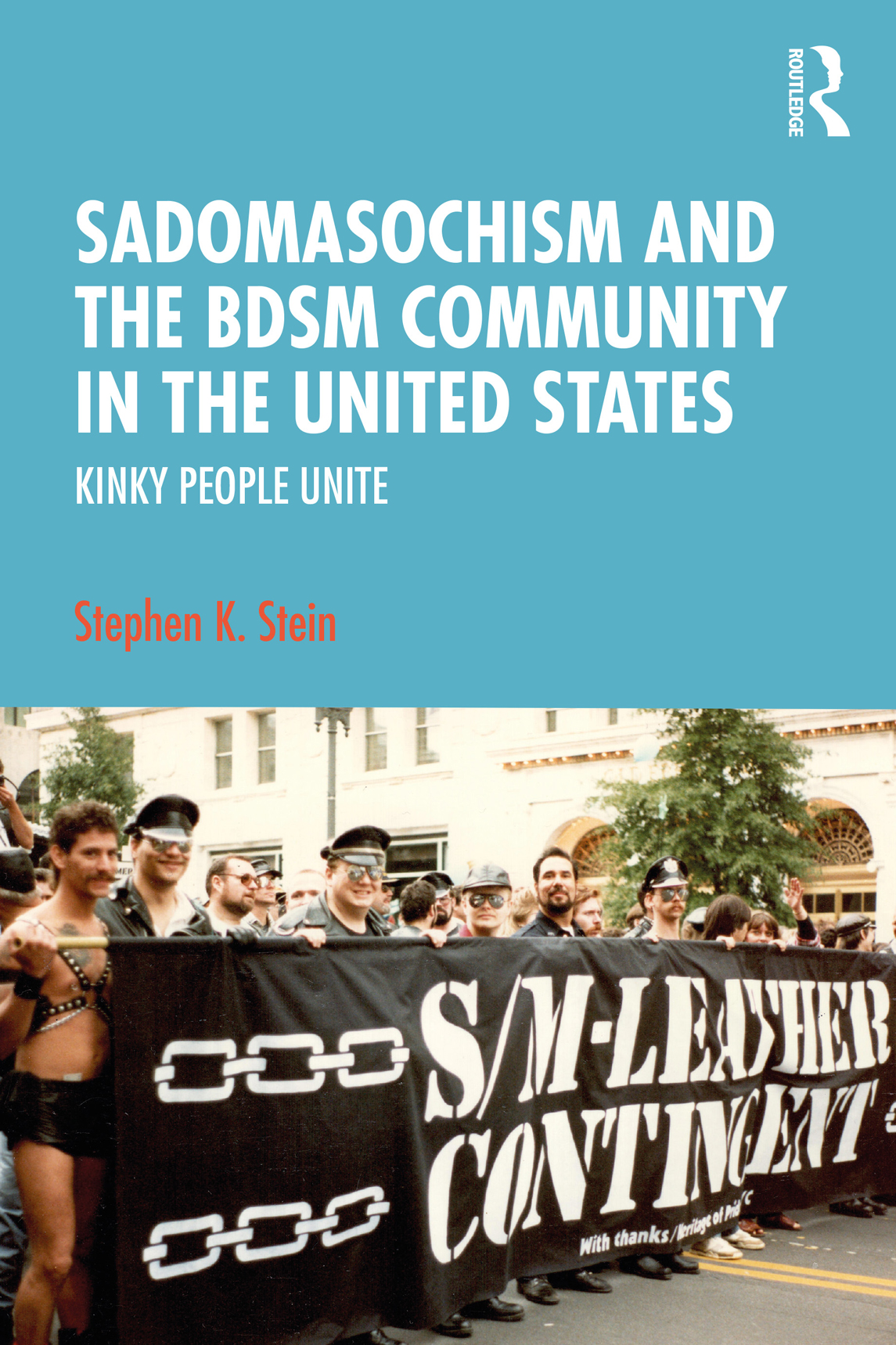
Sadomasochism and the BDSM Community in the United States
Sadomasochism and the BDSM Community in the United States: Kinky People Unite chronicles the development of sadomasochistic sexuality and its communities in the United States from the post-war period to the present day.
Having evolved from scattered networks of sadomasochists to a coherent body bound by shared principles of safe, sane, consensual, activists worked to transform popular perceptions of their community, end its routine harassment by law enforcement and win inclusion in American society. Often paralleling the work of LGBTQ activists, people who engaged in BDSM (Bondage and Discipline, Dominance and Submission, and Sadism and Masochism) transformed both their own sexual practices and how outsiders perceived them, successfully changing popular perceptions of them from fascists, murderers, and outlaws to people living an alternative lifestyle. The development of this community highlights the interactions of people of different sexual orientations within a sexual community, the influence of various campaigns for sexual freedom, and the BDSM communitys influence on popular perceptions of sexuality and sexual freedom. The texts historical perspective gives depth and texture to a specific dimension of American history of sexuality.
This book will be of interest to students and scholars in the history of sexuality. Its clear and direct approach offers an important and useful chronology of a movement that has long been neglected.
Stephen K. Stein is Associate Professor of History at the University of Memphis, USA. He works in the histories of the US military, technology, and sexuality.
First published 2021
by Routledge
52 Vanderbilt Avenue, New York, NY 10017
and by Routledge
2 Park Square, Milton Park, Abingdon, Oxon OX14 4RN
Routledge is an imprint of the Taylor & Francis Group, an informa business
2021 Taylor & Francis
The right of Stephen K. Stein to be identified as author of this work has been asserted by him in accordance with sections 77 and 78 of the Copyright, Designs and Patents Act 1988.
All rights reserved. No part of this book may be reprinted or reproduced or utilised in any form or by any electronic, mechanical, or other means, now known or hereafter invented, including photocopying and recording, or in any information storage or retrieval system, without permission in writing from the publishers.
Trademark notice: Product or corporate names may be trademarks or registered trademarks, and are used only for identification and explanation without intent to infringe.
Library of Congress Cataloging-in-Publication Data
A catalog record for this title has been requested
ISBN: 978-0-367-47681-6 (hbk)
ISBN: 978-0-367-47680-9 (pbk)
ISBN: 978-1-003-03582-4 (ebk)
Typeset in Bembo
by codeMantra
To Carolyn
Several archivists helped me over the course of my research, unearthing rarely seen documents, including Shawn Wilson and Liana Zhou at the Kinsey Institute, and Rick Storer and Mel Leverich at the Leather Archives and Museum in Chicago, and Viola Johnson guided me through the holdings of the travelling Carter Johnson Leather Library. A Catherine and Charles Freeburg Fellowship allowed me to take a semester off and complete this book. I am particularly grateful to the many members of the BDSM community who spoke to me over the years, particularly Vince Andrews, Victoria Baker, Gerrie Blum, Pat Bond, Rafe DeCoito, Mark Frazier, Laura Goodwin, Johnny Gray, Jan Hall, Chuck Higgins, Sallee Mallard Huber, Viola Johnson, Mitch Kessler, Jan Lyon, Lee from NLA Austin, George Nelson, Pyxy, Bill Miranda Salzman, Seraphina, Artemis Silverowl, Vik Stump, Cecilia Tan and many others. Jan Hall shared her records of the SSCA, and Vince Andrews shared NLA records not held at the Leather Archives and Museum. My special thanks go to Nancy Ava Miller who not only discussed the Dallas Conference and early years of PEP with me, but also contributed this books cover photo, which she took at the 1987 March on Washington.
AOLAmerica OnlineAPAAmerican Psychiatric AssociationAPEXArizona Power ExchangeASSAtlanta SM SolidarityB&DBondage and DisciplineBDSMA combination of B&D, D&S and S&MCDGChicagoland Discussion GroupCHCChicago Hellfire ClubCMCCalifornia Motor ClubCOSMOSCouncil of SM OrganizationsDADSDenver Area Dominants and SubmissivesD&SDominance and SubmissionDSMDiagnostic and Statistical Manual (of the APA)FFAFist Fuckers of AmericaGDIGod Damn IndependentGMSMAGay Male SM ActivistsHELPHomophile Effort for Legal ProtectionIMLInternational Mr. LeatherIMsLInternational Ms. LeatherISCInterim Steering Committee of the SSCALAAMLeather Archives and MuseumLGBTQLesbian, Gay, Bisexual, Transsexual, QueerLILLiving in LeatherLSMLesbian Sex MafiaMAsTMasters and slaves TogetherNCSFNational Coalition for Sexual FreedomNEANational Endowment for the ArtsNELANew England Leather AllianceNGLTFNational Gay and Lesbian Task ForceNLANational Leather AssociationNOWNational Organization for WomenORGASMOregon Guild Activists of SMPEPPeople Exchanging PowerRACKRisk Aware Consensual KinkSDGSeattle Dungeon GuildSOBNETSexually Oriented Board NetworkSSCSafe, Sane, ConsensualSSCASafe, Sane, Consensual AdultsTCCThe Tri-State Couples ClubTESThe Eulenspiegel Society (later officially renamed TES)VASMVancouver Alliance for SMWAPWomen Against PornographyWIITWDWhat It Is That We Do
E.L. James 2011 novel Fifty Shades of Grey surprised criticsboth by its contents, a sadomasochistic relationship between billionaire Christian Grey and recent college graduate Anastasia Steele, and its record-breaking success. Apparently, sadomasochistic sex appealed to millions of readers. This should not have come as a surprise. Surveys showed about ten percent of Americans experimented with spanking or bondage or other forms of what practitioners labeled BDSM, a condensed abbreviation of the most common terms describing sadomasochistic sexuality: bondage and discipline (B&D), dominance and submission (D&S or D/S) and sadism and masochism (S&M, S/M, or SM). Comedians like Stephen Colbert joked about it. Gags, safe words and other BDSM jargon and paraphernalia figured in their punch lines. Popular television shows ranging from CSI and Law & Order to Castle, Frasier, and Will and Grace featured BDSM-themed episodes. This sexual knowledge, which facilitated Fifty Shades success, resulted from a concerted, decades-long effort by BDSM activists to organize sadomasochists into a distinct community, reshape their sexuality and end its pejorative characterization by legal and medical authorities. By presenting BDSM as safe, sane, and consensual they changed popular perceptions. Instead of dangerous sociopaths, criminals and fascists, sadomasochists became just another alternative lifestyle, as Rosie ODonnell declared them in Exit to Eden (1994), a film based on Anne Rices novel.
***
Since then, sadomasochists have pushed back against the pathologization of their sexual desires, sought to reclaim these terms and offered their own terminology and definitions. In the early 1980s, members of Atlanta S&M Solidarity (
Writing in mid-1970s as popular awareness of sadomasochism grew,
Numerous sexual activities fall under the rubric of BDSM scenes are usually negotiated in advanceoften in quite rigorous detailas tops and bottoms discuss their interests and establish limits.
In many ways,
Sadomasochists have offered numerous explanations for
Next page


